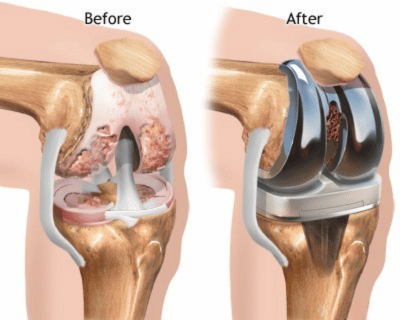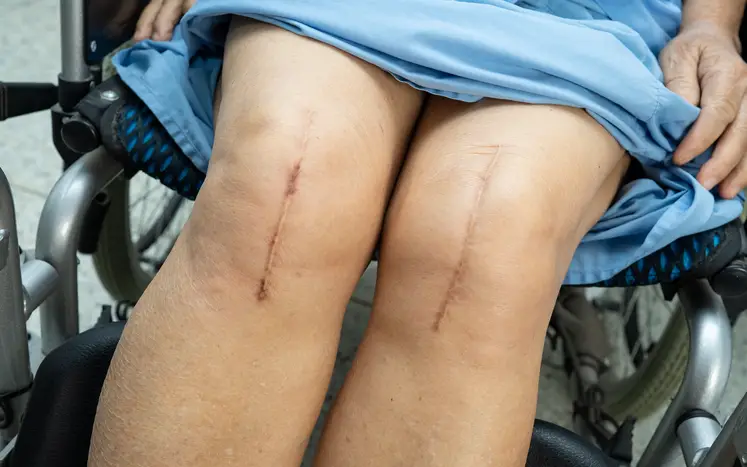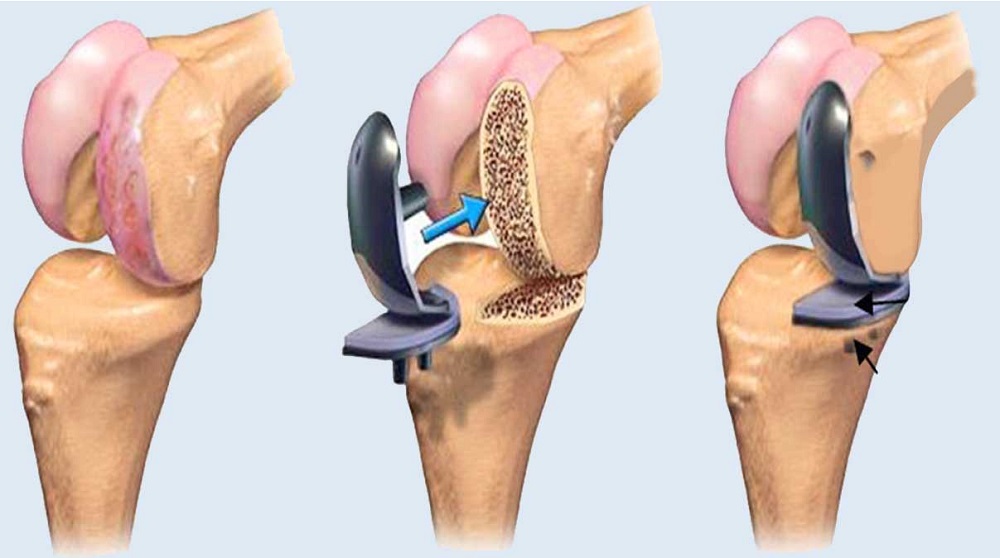Knee replacement surgeries have helped millions regain mobility and lead active lives. But what happens when a knee implant fails or wears out over time? This is where revision knee replacement comes in. It’s a procedure performed to replace a previously implanted artificial knee joint that has failed due to loosening, infection, wear, or other complications.
Minimally invasive revision knee replacement is a newer, more advanced method that offers reduced pain, faster recovery, and less damage to surrounding tissues. This technique uses smaller incisions and specialized instruments to perform the revision surgery, making it a preferred choice for many patients and surgeons.

In this blog, you’ll learn:
- What revision knee replacement involves
- When and why it’s needed
- Benefits of the minimally invasive approach
- What to expect during and after the procedure
- Risks and challenges
- Tips for recovery
- How to choose the right surgeon
What Is Revision Knee Replacement?
Revision knee replacement is a surgical procedure where an old or failed knee implant is removed and replaced with a new one. Unlike primary knee replacement, this surgery is more complex. It often involves dealing with bone loss, scar tissue, or infection.
This surgery is typically needed when:
- The implant becomes loose or unstable
- The patient experiences persistent pain
- The artificial joint wears out
- There is an infection in the knee joint
- The implant fails due to trauma or dislocation
Revision surgeries may involve replacing only a part of the implant or the entire prosthetic joint, depending on the issue.
Why Choose Minimally Invasive Techniques?
Traditional revision surgeries require large incisions and more soft tissue manipulation, which can result in longer hospital stays and increased recovery time. In contrast, the minimally invasive method uses smaller cuts and specialized tools to perform the same task with less disruption.
Benefits include:
- Shorter hospital stay
- Less blood loss
- Faster recovery and rehabilitation
- Reduced pain after surgery
- Smaller scars
- Lower risk of infection
This approach is especially beneficial for elderly patients or those with multiple health concerns.
When Is It Time for Revision Surgery?

You might need revision surgery if:
- You feel pain or stiffness in your knee despite following rehabilitation
- Your implant feels loose or unstable when walking or standing
- Your knee swells frequently or shows signs of infection
- Imaging tests show the implant is worn out or misaligned
- You’ve had your knee replaced more than 15–20 years ago
Don’t wait too long if you’re experiencing these symptoms. Early diagnosis and intervention can prevent further complications.
How Is Minimally Invasive Revision Surgery Performed?
Here’s what typically happens:
1. Evaluation and Planning
The surgeon performs physical exams, X-rays, CT scans, and blood tests to assess the implant’s condition. A personalized surgical plan is created based on your knee’s anatomy and implant type.
2. Anesthesia and Incision
You’re given either spinal or general anesthesia. The surgeon then makes a small incision, usually 3–5 inches, near the original surgical site.
3. Implant Removal
Using special tools, the old implant or its parts are carefully removed without damaging healthy bone or tissue.
4. Implant Replacement
New components are inserted and secured, often using modern materials for longer life and better function. Bone grafting may be done if there’s bone loss.
5. Closure and Recovery
The incision is closed using sutures or staples. Recovery begins immediately with monitored movement and physiotherapy.
Recovery and Aftercare

This is gradual but smoother with the minimally invasive approach. Here’s what to expect:
- Hospital Stay: Usually 1–3 days
- Walking: You’ll start walking with support within 1–2 days
- Pain Management: Oral medications and icing reduce discomfort
- Physiotherapy: Begins early to regain strength and mobility
- Follow-Up: Regular visits to monitor healing and implant stability
To speed up recovery:
- Follow your physiotherapist’s guidance
- Eat a nutritious diet rich in protein and calcium
- Avoid high-impact activities for the first few months
- Keep the incision area clean and dry
Possible Risks and How They Are Managed
Though rare, some risks include:
- Infection
- Blood clots
- Implant loosening
- Nerve or blood vessel injury
- Delayed wound healing
These risks are minimized with proper surgical planning, skilled hands, and a sterile environment. Choosing an experienced orthopedic surgeon is key to minimizing complications.
How to Choose the Right Surgeon
When planning revision surgery, look for:
- Experience in knee revision surgeries
- Training in minimally invasive and robotic techniques
- Positive patient outcomes
- Transparent communication and post-op care
Choosing a surgeon who understands your needs and customizes your treatment can make a big difference in your recovery and long-term success.
Meet Dr. Kunal Makhija: Your Trusted Orthopedic Surgeon
Dr. Kunal Makhija’s approach is centered on providing personalized, patient-focused care. With a passion for improving the lives of his patients, he offers the best possible treatments backed by years of experience. If you’re looking for an expert in robotic knee replacement surgery and hip replacement surgery, Dr. Kunal Makhija is the surgeon you can trust for top-quality care and optimal results.
Contact Dr. Kunal Makhija for Consultation
To schedule a consultation with Dr. Kunal Makhija, or if you have any questions about robotic knee or hip joint replacement surgery, feel free to reach out. His clinic in Panvel, Navi Mumbai, is equipped with advanced technology to provide the best treatment options available.
Contact Details
Patel Clinic and Orthopaedic Centre
Kuber Apartment ‘A’, Joshi Ali Road, near City Police Station
Panvel, Navi Mumbai – 410206
Call us:
+91 85913 99962
+91 87673 02801
Mail us:
[email protected]
Frequently Asked Questions
1. How do I know if I need revision knee replacement surgery?
If you feel consistent pain, instability, or swelling in your knee after a previous replacement, you may need a revision. Imaging tests will help confirm the condition of your implant.
2. Is the minimally invasive method suitable for all revision cases?
Not all cases qualify. The surgeon decides based on factors like implant condition, bone quality, and patient health.
3. How long will the recovery take?
Most patients return to normal activities in 6–12 weeks. Full recovery may take 6 months depending on age, fitness, and procedure complexity.
4. Will I need physiotherapy after the surgery?
Yes. Physical therapy is essential to rebuild strength, improve mobility, and ensure the success of the new implant.
5. How long does a revised knee implant last?
With proper care, a revised implant can last 15 years or longer. Regular checkups help monitor its function.
Conclusion
Minimally invasive revision knee replacement offers new hope for patients who’ve experienced implant failure or chronic knee problems after their initial surgery. With smaller incisions, faster recovery, and fewer complications, it’s changing how revision procedures are done.
If you’re facing issues with a previous knee replacement, don’t delay treatment. Early consultation can improve your chances of a successful outcome and get you back on your feet with confidence.
For expert care and long-lasting results, connect with Dr. Kunal Makhija and explore your best options today.
